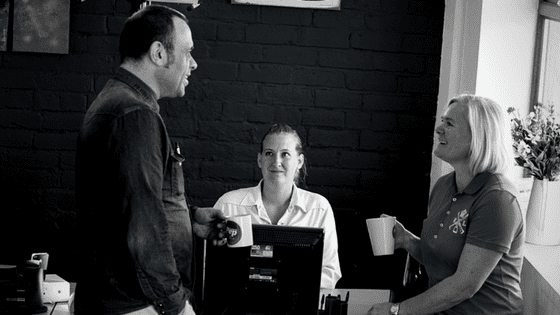A strong, shared vision is pivotal to the success of a business. If you can’t see the meaning and value of what you’re doing, it’s very hard to remain motivated and to work to your full potential. Having a clear vision – and a set of values, a mission statement to match, and a clear purpose – is key for a thriving business.

A vision helps a business to:
- Stay focused
- Move in the same direction
- Make well-grounded decisions
- Prioritize projects and workload
- Get back on track if needed
- Inspire others about their work
- Be motivated
- Gain perspective
4 steps to establish a shared vision
To create a compelling vision for your business, you need to establish core values, be very clear about the purpose and the overall the mission of the business.
The business vision answers,
- why the business exists,
- what the business is trying to accomplish,
- how it will make it happen
- and when it will happen.
1. Establish your core values
Articulate and describe your core values. These are the values that everybody in your business is expected to commit to and to use, demonstrate, showcase and articulate constantly while performing their responsibilities at work.
Values also guide your purpose and mission.
Examples of core values: reliable, efficient, diverse, respectful, innovative etc.
Remember: Values tell you HOW you are doing things.
Consider values as the compass for your business.
2. Be clear about the purpose of your business
Purpose and mission often get mixed-up, however, there is a distinct difference. To be clear about your purpose ask the question why your business exists or how does your team impact the business or the wider organization?
Remember: The purpose tells you WHY you are doing what you do.
The purpose guides and inspires the team.
3. Write a strong mission statement
The mission statement illustrates and describes what your business is aiming to accomplish. Ask the following question:
- What needs does the business address?
- What does the business want to achieve?
- What level of service or production does the business provide?
An effective mission statement is future-centric and ideal – it transmits an ideal but possible picture of the future. It incorporates your values, is inspirational, focused and clear, and can be easily communicated in less than 60 seconds.
Remember: The mission statement tells you WHAT the business is doing to accomplish the purpose.
The mission drives your business.
4.Strategies for achieving the business mission
Once you have specified, defined and documented the business values, purpose and mission you need to make it happen.
Ask the following questions:
- How will you achieve your mission?
- What are our plans and next steps?
- What are our short-term and long-term goals?
- What are potential threats?
Remember: The strategy tells you HOW the team is going to achieve the mission
Last but not least, communicate your vision regularly with your team, clients, partners, and stakeholders and if needed reiterate the setup process.






















